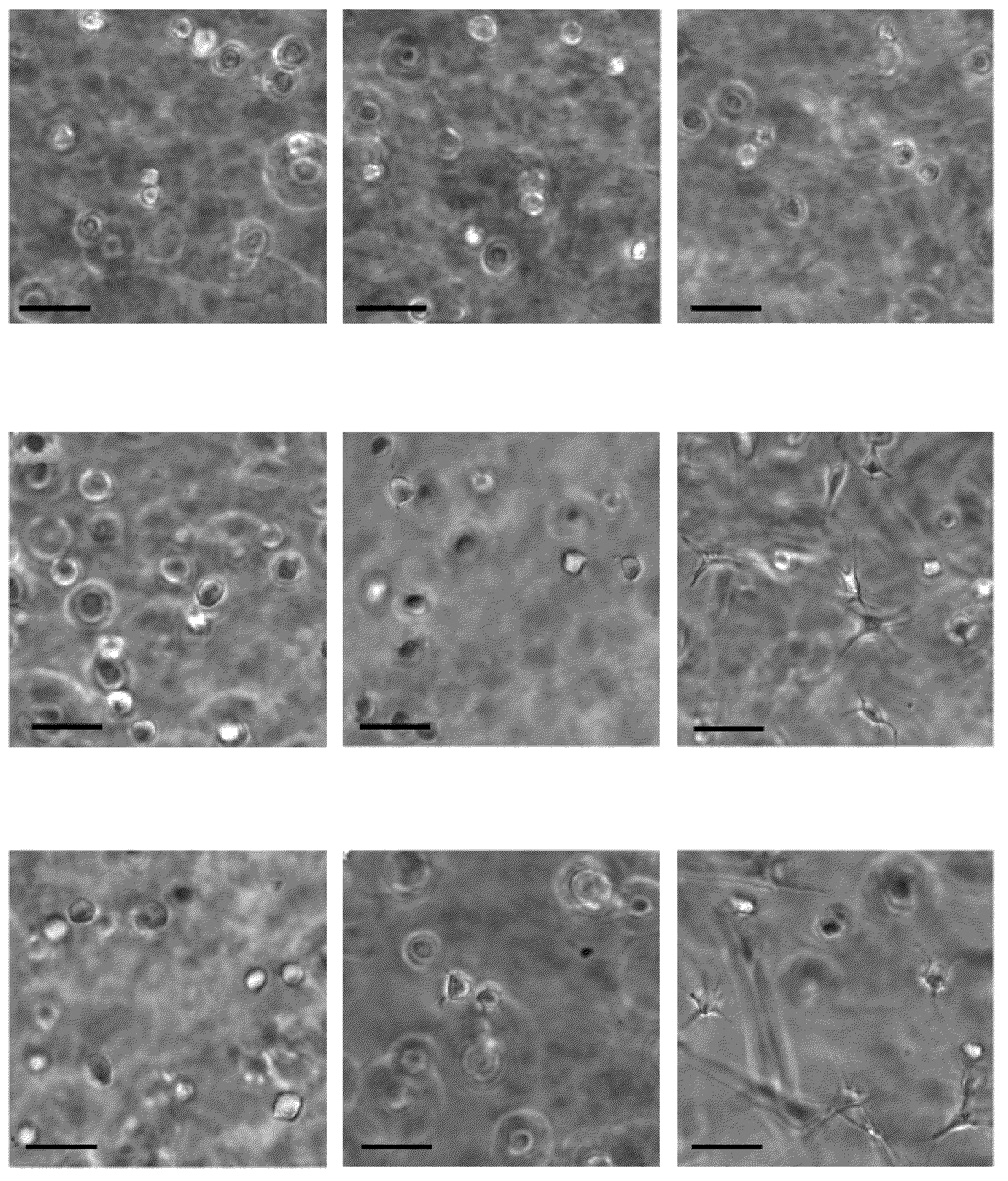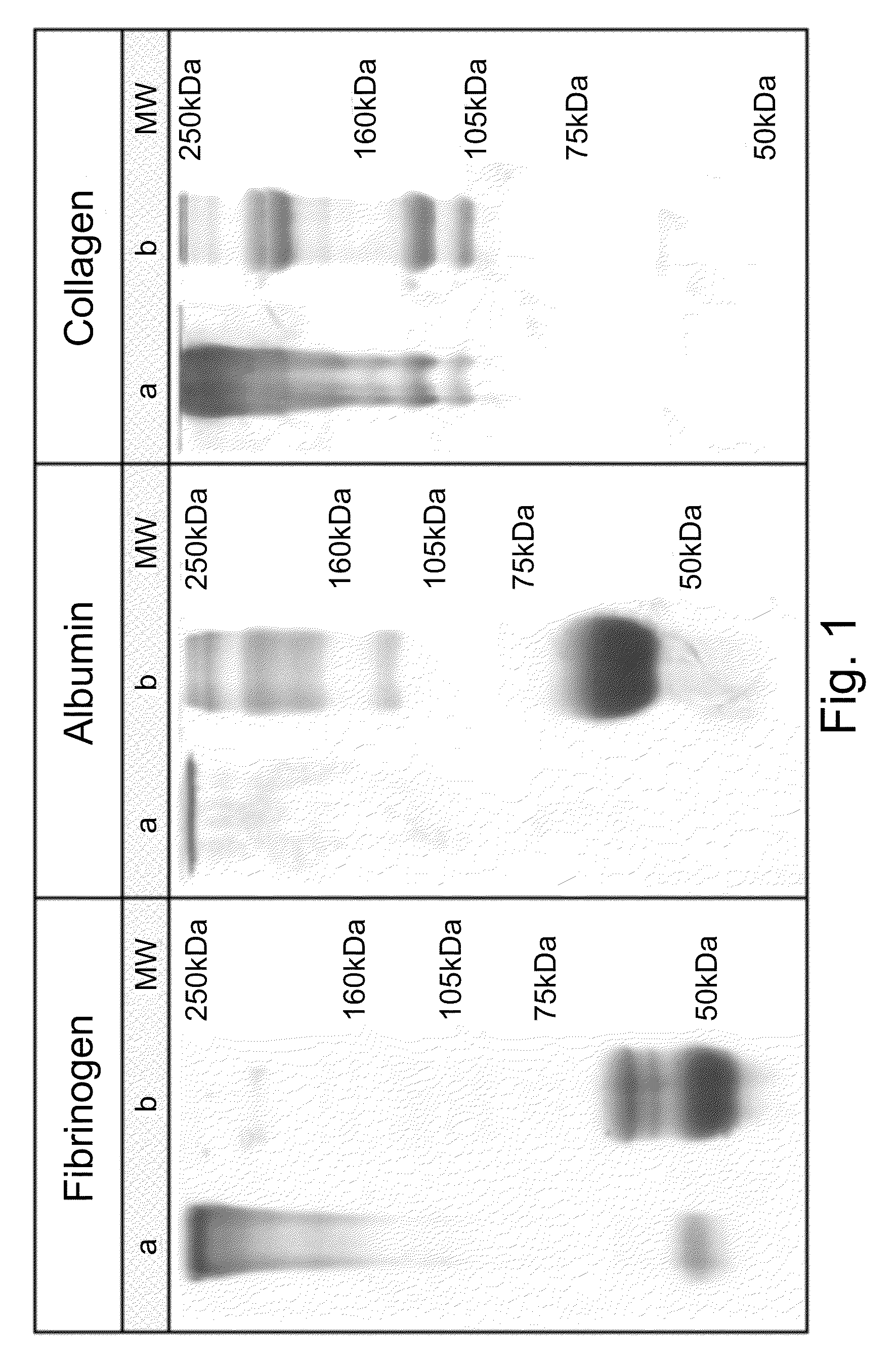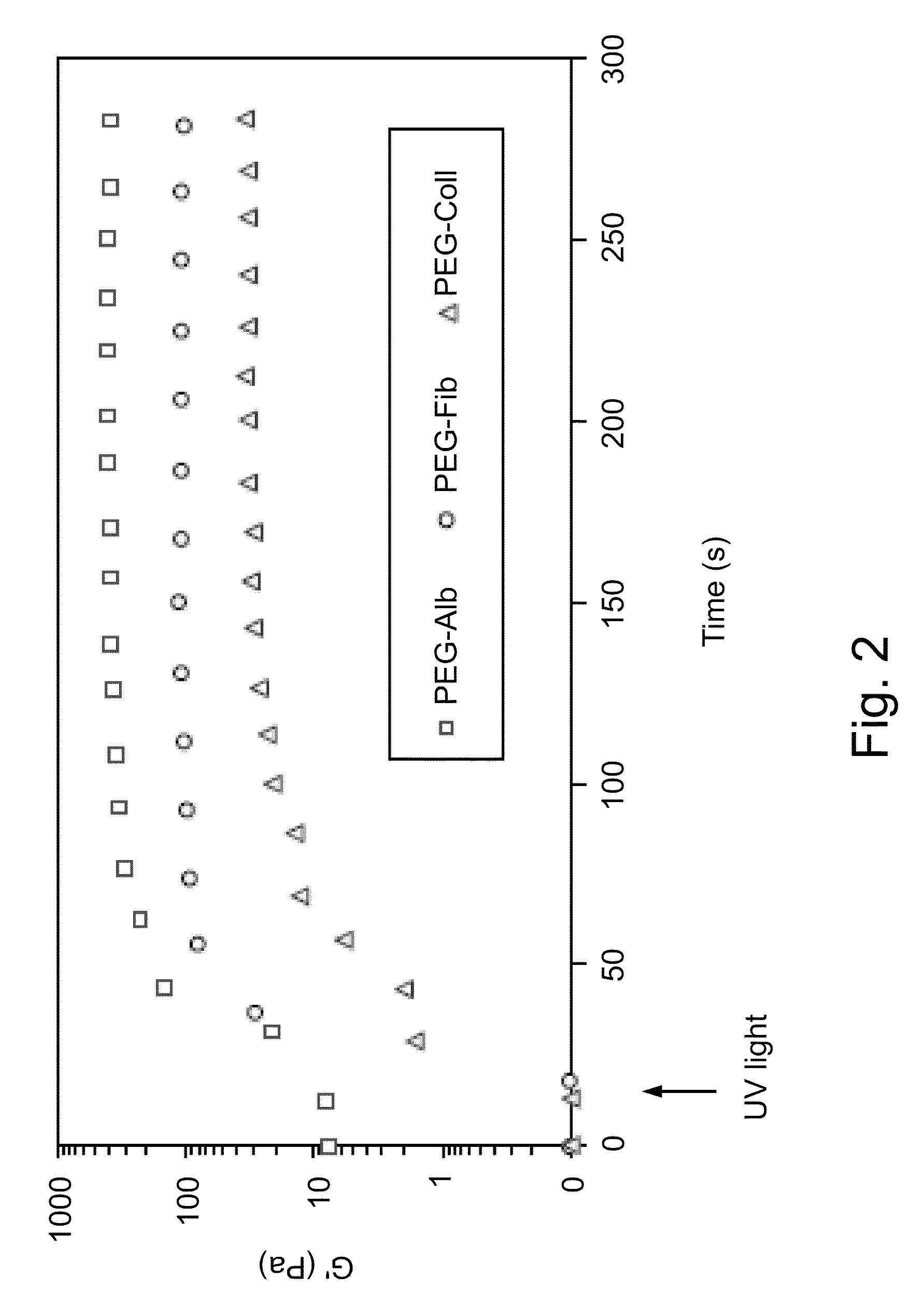Compositions and methods for scaffold formation
a technology of scaffolds and compositions, applied in the field of scaffolds, can solve the problems of poor physical strength and super-physiological tissue porosity, limited cell migration into the depth of synthetic scaffolds, and premature deterioration of scaffolds,
- Summary
- Abstract
- Description
- Claims
- Application Information
AI Technical Summary
Benefits of technology
Problems solved by technology
Method used
Image
Examples
examples
[0178]Reference is now made to the following examples, which together with the above descriptions illustrate some embodiments of the invention in a non limiting fashion.
Peg-Diacrylate Synthesis:
[0179]PEG-diacrylate (PEG-DA) was prepared from linear 10 kDa PEG-OH (Fluka, Aldrich) as described elsewhere. Briefly, acrylation of PEG-OH was carried out under argon by reacting a dichloromethane solution of PEG-OH with acryloyl chloride (Merck) and triethylamine (Fluka) at a molar ratio of 1.5:1 acryloyl chloride to OH groups. The final product was precipitated in ice-cold diethyl ether and dried under vacuum for 48 hours. 1H-NMR spectroscopy was used to verify end-group conversion and purity of the final product.
Collagen thiolation and PEGylation:
[0180]Collagen (type I) was isolated from rat tail tendon according to published protocols. Thiolation of collagen was accomplished using succinimidyl-acetyl-thioacetate (SATA) (Pierce) as described by Chen et al. (2002). Briefly, collagen was di...
PUM
| Property | Measurement | Unit |
|---|---|---|
| concentration | aaaaa | aaaaa |
| molecular weight | aaaaa | aaaaa |
| concentration | aaaaa | aaaaa |
Abstract
Description
Claims
Application Information
 Login to View More
Login to View More - R&D
- Intellectual Property
- Life Sciences
- Materials
- Tech Scout
- Unparalleled Data Quality
- Higher Quality Content
- 60% Fewer Hallucinations
Browse by: Latest US Patents, China's latest patents, Technical Efficacy Thesaurus, Application Domain, Technology Topic, Popular Technical Reports.
© 2025 PatSnap. All rights reserved.Legal|Privacy policy|Modern Slavery Act Transparency Statement|Sitemap|About US| Contact US: help@patsnap.com



